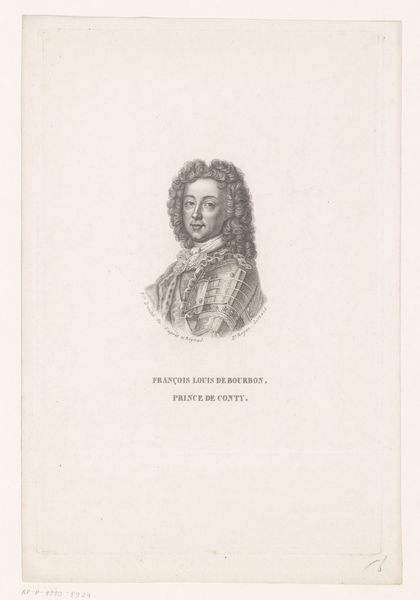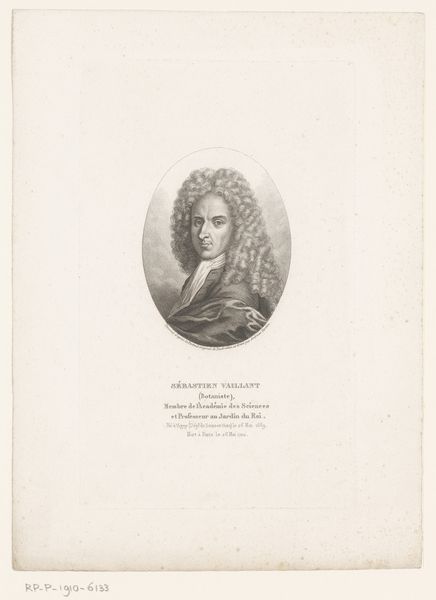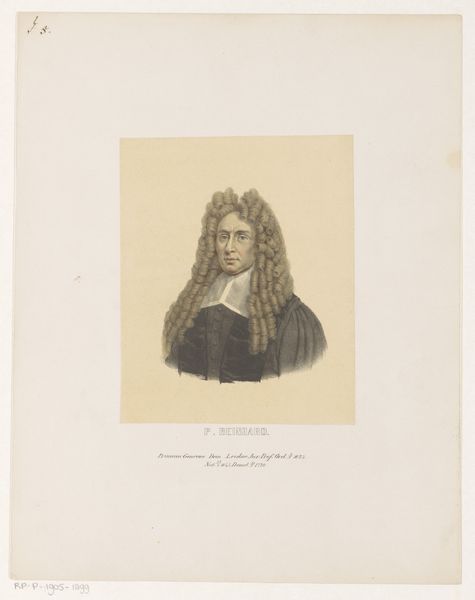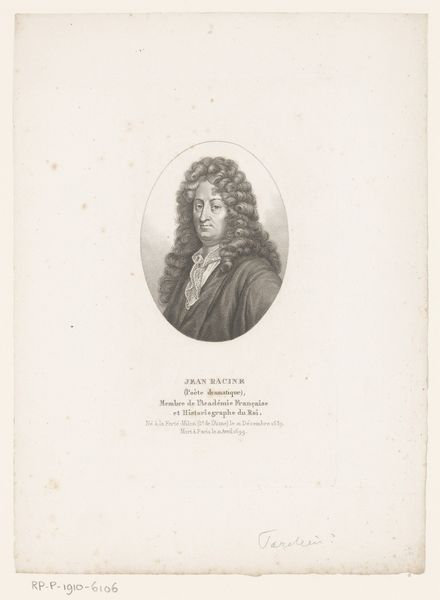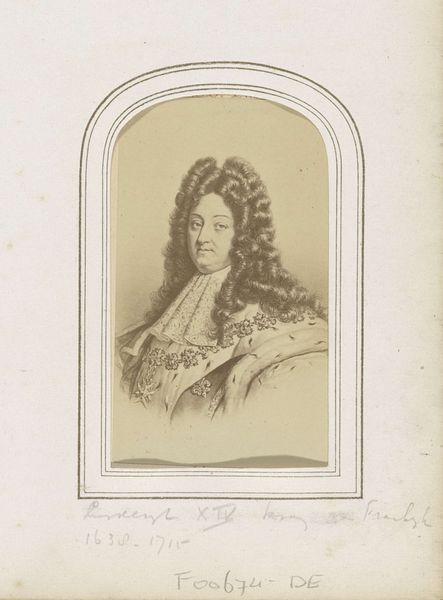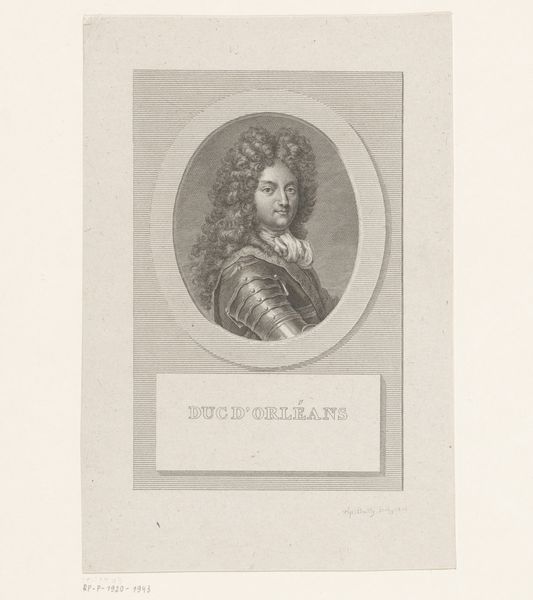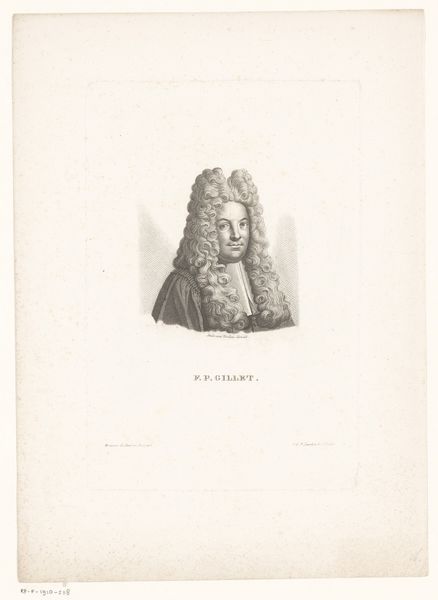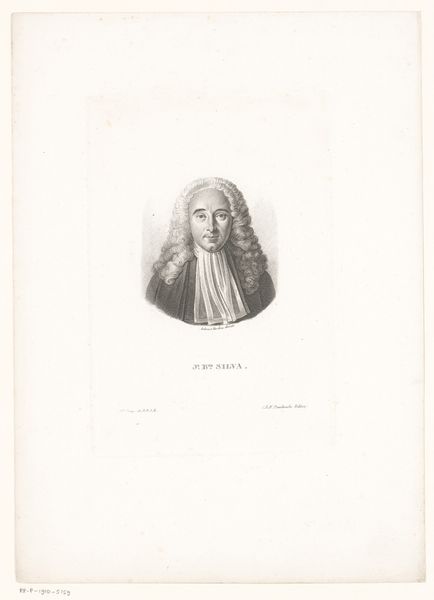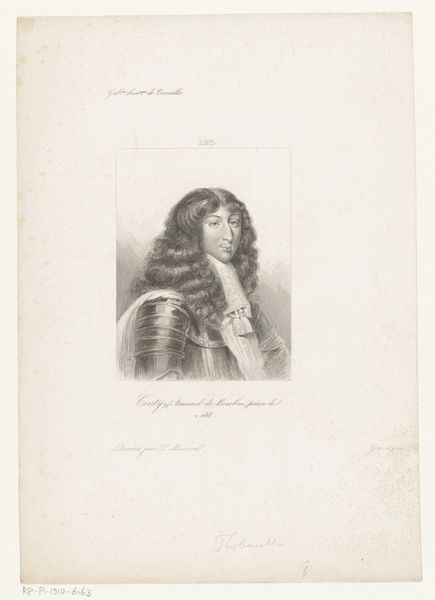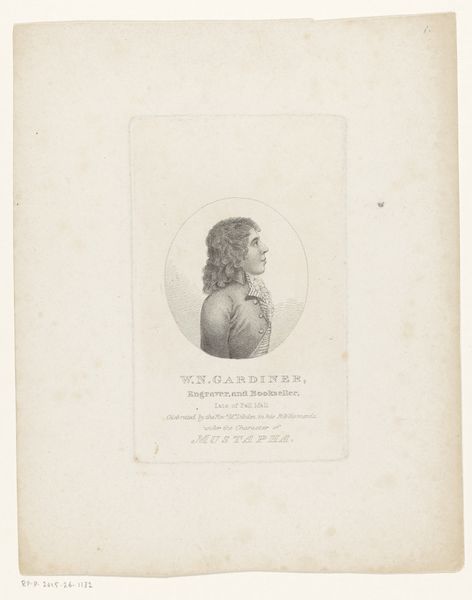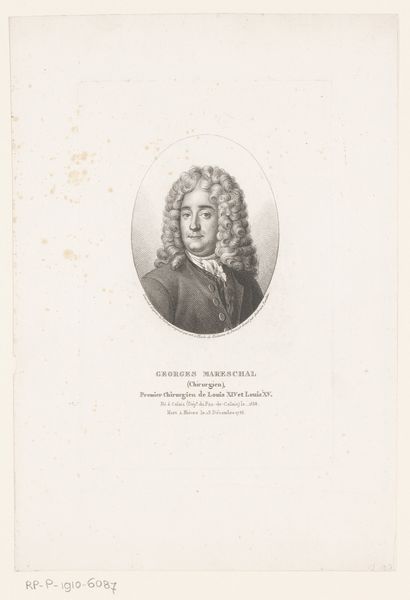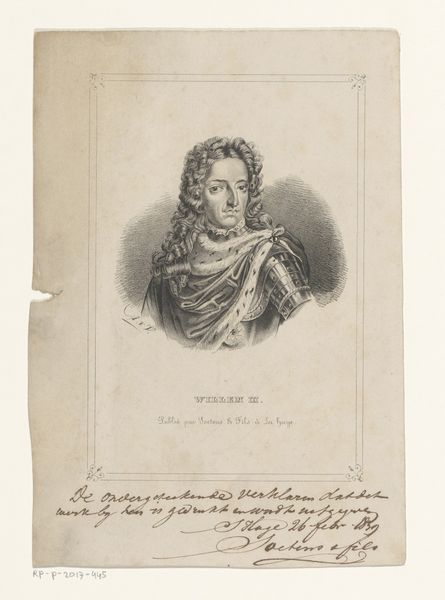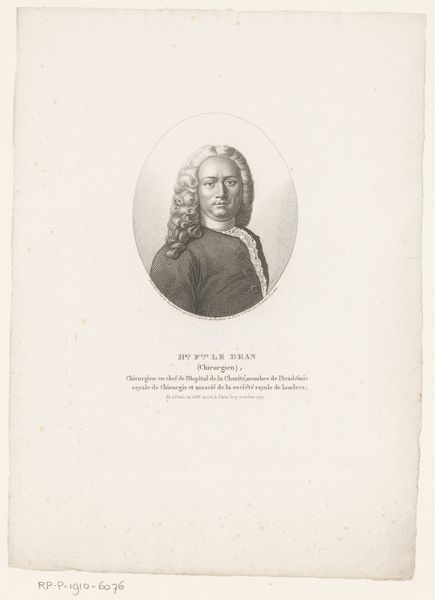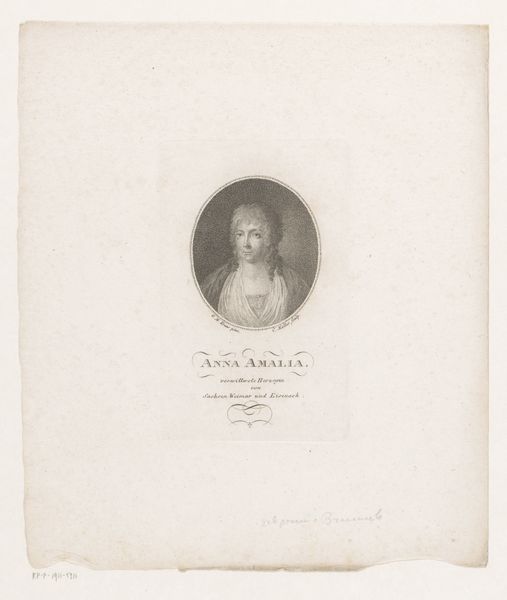
print, engraving
#
portrait
#
neoclacissism
# print
#
old engraving style
#
history-painting
#
engraving
Dimensions: height 219 mm, width 145 mm
Copyright: Rijks Museum: Open Domain
Curator: The print before us is titled "Portret van Lodewijk van Frankrijk", or "Portrait of Louis of France," made sometime between 1825 and 1845. It's an engraving of Louis, le Grand Dauphin, from the Neoclassical era. Editor: My first thought is how incredibly stylized the portrayal is. The wig practically steals the show, and the armor seems more ornamental than functional. It conveys a sense of rigid formality. Curator: That formality was entirely the point. Neoclassicism, even when depicting royalty, emphasized order, reason, and a return to perceived classical virtues. Images of figures such as Louis served to communicate the stability and legitimacy of the Bourbon dynasty, a significant matter after decades of revolutionary upheaval. Editor: Absolutely. The engraver employed very specific symbolism that extends beyond mere depiction. Notice the intricate detail of the armor; the texture suggests not just protection but also an elevated status, associating him with traditional codes of chivalry and aristocratic virtues. Curator: Indeed. Printmaking allowed for wide dissemination of such images, ensuring that these symbolic messages reached a broad audience, reinforcing the social hierarchy of the time. However, prints such as these served a dual function, one of public legitimation, yet simultaneously, also perpetuated specific ideals of masculinity that have had implications far into our future. Editor: The detail in the print invites us to contemplate on a range of ideas about inherited status and ideals. Consider his expression—a carefully constructed image meant to project power. These portraits also were very psychological—suggesting authority but with vulnerability, like any human face Curator: Considering the tumultuous history of France during and after Louis' life, there’s a subtle layer of pathos in his formal representation here, something we have been considering regarding portraiture more broadly in recent times. It's a statement of enduring power precisely when that power was most challenged. Editor: Precisely! By examining these symbolic layers, we start to look beyond the image and glimpse the broader narratives about the period. This seemingly straightforward portrait turns into something profoundly multifaceted.
Comments
No comments
Be the first to comment and join the conversation on the ultimate creative platform.
